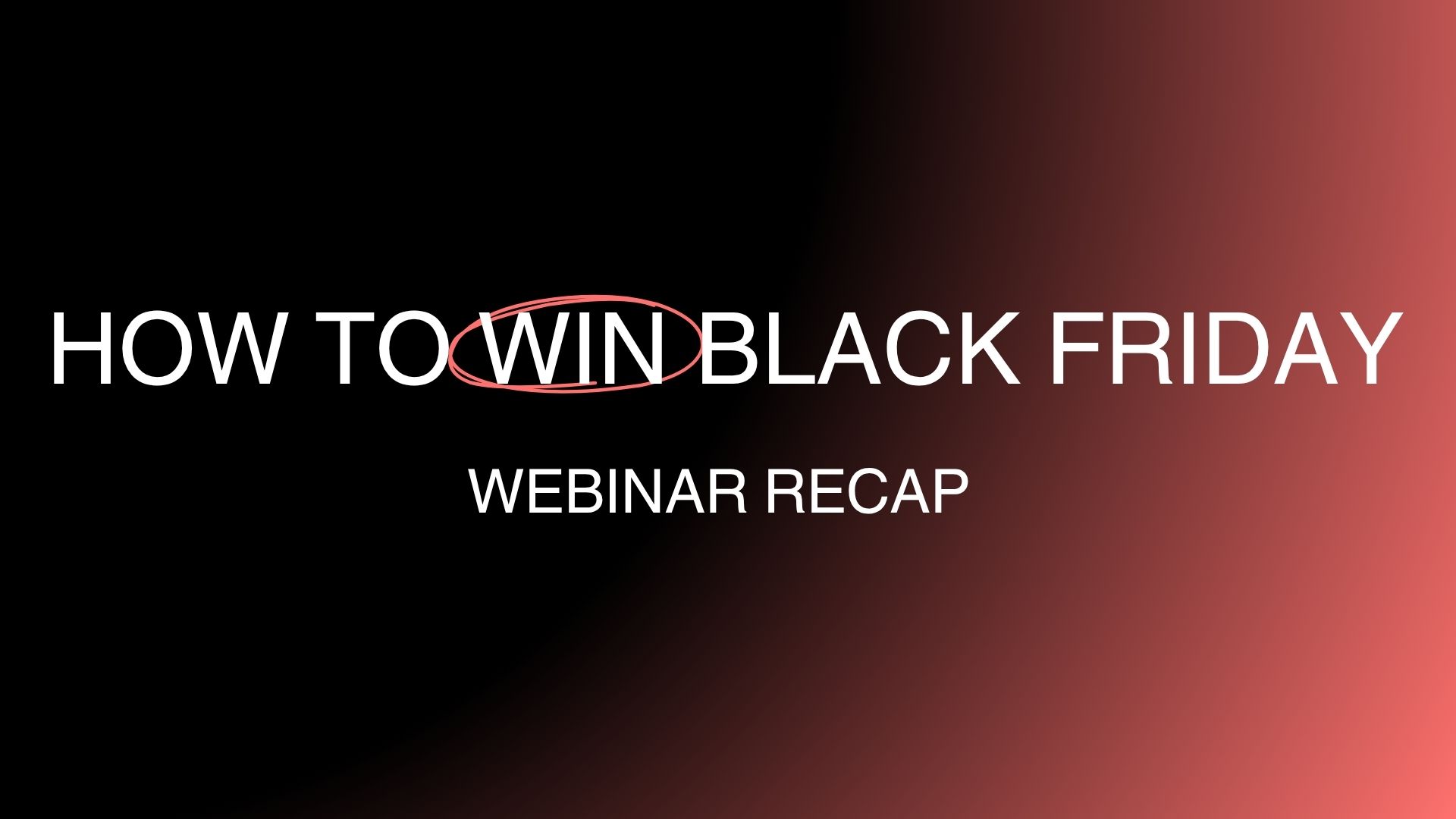
Peak season. Those three months that decide how the year shakes out. If you’re in ecommerce or retail, you know the feeling: everything ramps up, budgets stretch, and everyone is watching the numbers.
We’ve been through a fair few peaks ourselves, and if there’s one thing we’ve learned, it’s this: no two years are the same. Costs rise, the economy shifts, and shoppers change how they shop. Fast. So this year we pulled together a panel of people who really know their stuff, from Google, Meta, AWIN, and Cricut, to share what’s working, what isn’t, and how to get ahead.
Here are the bits that stood out.
One of the clearest shifts we’ve seen in recent years is how much earlier UK shoppers are starting their Christmas buying. All our research show the same pattern: the UK starts earlier than any other market, and those early shoppers are worth a lot more.
On average, people who start before 1 November spend around £437, compared with £301 for those who leave it later. That’s nearly 50 percent more value from the early crowd. It’s not just about being “ready” for peak by November - the peak has already begun by then.
We’re also seeing gift-related searches and social content taking off in early October. On Meta platforms, Christmas shopping Reels start trending then. In Google Search, we see a rise in exploratory queries like “best gifts for…” weeks before the official sales days. This is when customers are still open to inspiration, not just hunting discounts.
The takeaway? If your campaigns are still in learning mode when shoppers are already buying, you’re missing out. Brands that launch in October and use that early window to test, optimise and capture demand are setting themselves up to win bigger baskets when Black Friday and Christmas roll in.
Google showed how AI is opening up whole new intent moments. People are searching in longer, more natural ways, and tools like AI Max and Performance Max are finding customers you wouldn’t reach with keywords alone. Retailers testing these campaigns are already seeing double-digit lifts in conversions, which makes experimenting early a smart move.
Meta reminded us that clicks don’t tell the whole story. Most people don’t click ads at all, but they’re still influenced by them. Measuring incrementality, not just CTR, uncovers the customers other advertisers miss. This year, creators and recommendation engines will be key in making sure your brand is discovered even when someone isn’t actively clicking.
AWIN highlighted how affiliates have moved way beyond last-click deals. Cashback sites, publishers and content partners are shaping consideration much earlier in the funnel. For many shoppers, inspiration starts with a trusted recommendation, not a discount code. Retailers who treat affiliates as a full-funnel performance channel, and who diversify beyond pure discounting, are seeing stronger and more sustainable growth.
Hearing from Steph at Cricut was a reminder that peak success isn’t only about the size of your discount. Last year, instead of pushing harder and harder on promotions, Cricut tapped into their creator community to inspire shoppers with gifting ideas and holiday projects.
The effect was twofold: they drove sales in the short term, but they also built brand engagement that lasted beyond peak. By showing customers what was possible with their products, Cricut turned inspiration into purchase intent without racing to the bottom on price.
For other retailers, the lesson is clear. Peak is a chance to create demand as well as capture it. If you only focus on discount-led conversion, you risk eroding margin and missing out on the long-term growth that comes from building excitement around your brand.
If there’s a theme here, it’s balance. Yes, peak is about shifting product and hitting sales targets, but it’s also about building momentum that lasts into next year.
The brands who’ll win in 2025 will:
Peak 2025 will be noisy. But if you treat it as more than just a sprint, you’ll not only hit your numbers, you’ll set yourself up for the long run too.
We’ve pulled all of these insights together, along with practical steps you can take right now, in our BFCM Playbook - download your copy here and make sure you head into Black Friday with a plan built for 2025, not 2022.